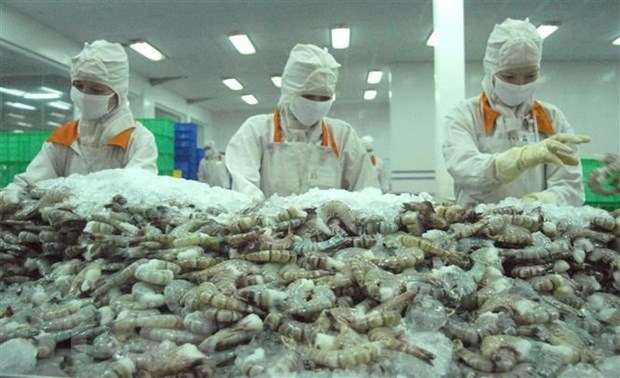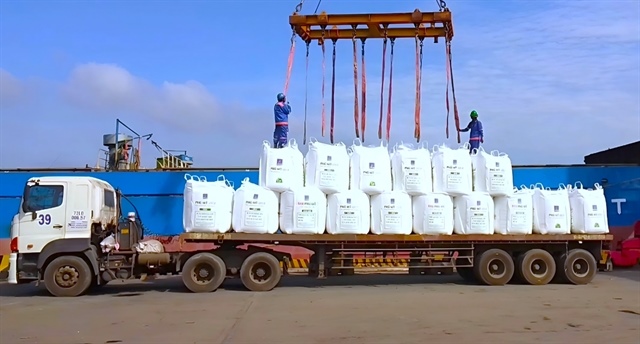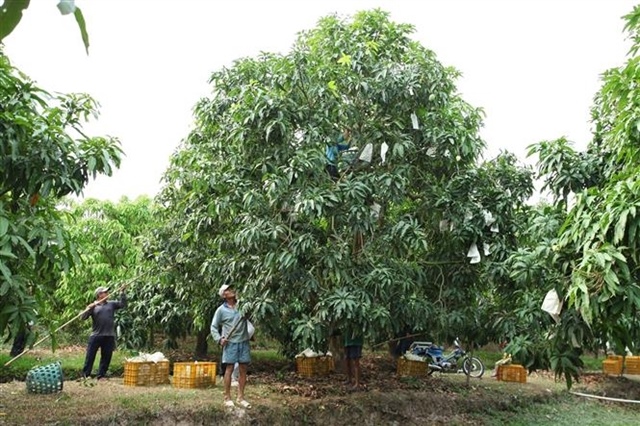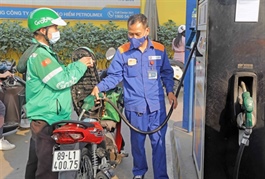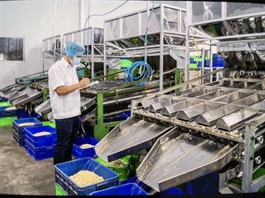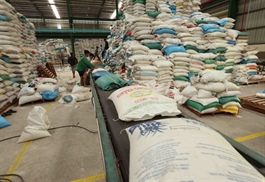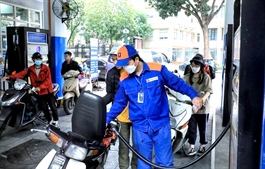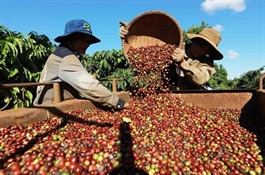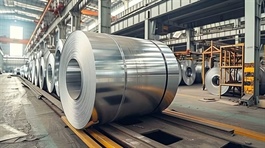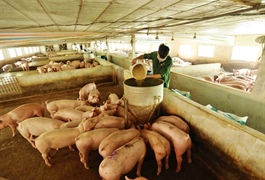Cà Mau emerges as Việt Nam’s shrimp powerhouse after merger
Cà Mau emerges as Việt Nam’s shrimp powerhouse after merger
The province now holds the largest shrimp farming area, scale and output in Việt Nam, and is pursuing an ambitious strategy to strengthen its position as the country’s “shrimp capital” while ensuring long-term sustainable growth.
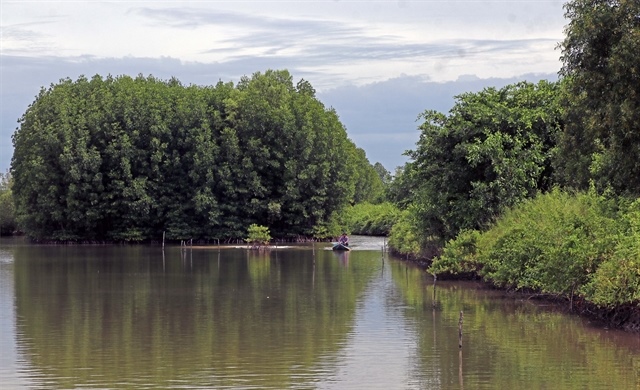
Shrimp and crab farming models under mangrove forests in Phan Ngọc Hiển Commune. VNA/VNS Photo |
With a unique coastal ecosystem and decades of aquaculture experience, Cà Mau Province has firmly established itself as the nation’s shrimp powerhouse.
Following the recent administrative merger of Cà Mau and Bạc Liêu, the province now holds the largest shrimp farming area, scale and output in Việt Nam, and is pursuing an ambitious strategy to strengthen its position as the country’s “shrimp capital” while ensuring long-term sustainable growth.
Cà Mau currently manages over 455,000 hectares of aquaculture, of which more than 427,000 hectares are devoted to shrimp farming — the largest in the country.
Annual shrimp output has surpassed 900,000 tonnes, and export turnover is expected to reach US$2.5 billion in 2025, with projections to exceed US$3 billion in subsequent years.
The province is home to a dense network of processing plants, seafood industrial parks, fishing ports and logistics hubs, placing it at the forefront of the national shrimp value chain.
According to the Directorate of Fisheries, Việt Nam’s shrimp industry earned more than $4 billion in exports in 2024, up 14 per cent from 2023.
Of this amount, Cà Mau contributed US$1.65 billion, followed by Bạc Liêu with US$1.21 billion. Experts believe that with the merger, Cà Mau’s shrimp industry has new momentum for a breakthrough.
“The unification of provinces creates favourable conditions for forming national-scale shrimp production zones with synchronised planning and investment,” deputy director of the provincial Department of Agriculture and Environment, Lưu Hoàng Ly said.
“This is a foundation to attract domestic and foreign capital, particularly in high technology, breeding, deep processing and brand development for Vietnamese shrimp.”
Business leaders share the optimism. Lê Văn Quang, general director of Minh Phú Seafood Corporation, said expanded space and advantages would bring greater prosperity to the province and its people.
He stressed that to meet the requirements of demanding markets such as the US, Japan and the EU, farmers and cooperatives must work closely with enterprises to obtain certifications like ASC, BAP or organic standards, ensuring traceability and food safety.
Cà Mau’s shrimp sector features a wide range of models, from intensive and super-intensive farming to integrated shrimp–mangrove and rice–shrimp systems.
High-tech intensive farming is showing particularly strong results, with about 40,000 hectares already under super-intensive, intensive and semi-intensive production.
The province aims to expand this to over 45,000 hectares by 2030.
Cà Mau’s seafood products have reached more than 90 countries and territories, including the world’s most demanding markets.
In 2024, the province’s seafood exports reached US$1.26 billion, up more than 5 per cent year-on-year.
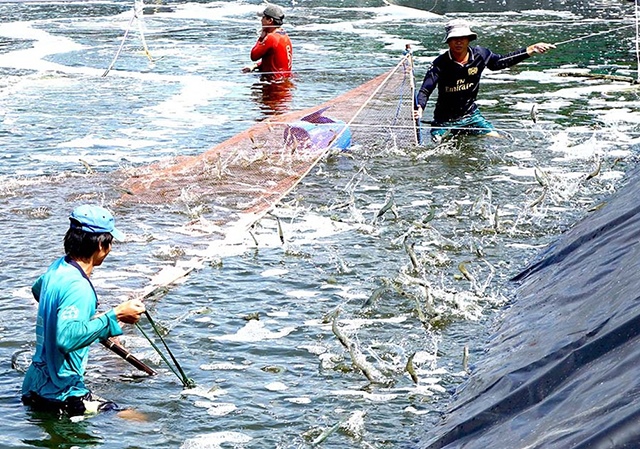
Shrimp and crab farming models under mangrove forests in Phan Ngọc Hiển Commune. VNA/VNS Photo |
Meanwhile, Bạc Liêu posted $1.21 billion. Before the merger, Bạc Liêu had six enterprises recognised as high-tech agricultural firms, 23 enterprises and cooperatives and 316 households with BAP, GlobalGAP or ASC certifications, and five organisations accredited for organic products.
However, challenges remain. Lê Văn Sử, deputy chairman of the provincial People’s Committee, acknowledged shortcomings in planning, insufficient farming infrastructure, unstable input services, unhealthy competition and environmental degradation.
Complicated disease outbreaks, limited investment policies, capital shortages and high logistics costs continue to reduce competitiveness, according to Sử.
Cà Mau and Việt Nam’s shrimp industry also face stiff competition from Ecuador, India and Thailand, where vertically integrated supply chains keep costs low.
By contrast, domestic shrimp raw material prices remain high, productivity uneven and success rates still limited.
To overcome these hurdles, the province is pursuing a green, clean and sustainable shrimp strategy.
By the end of 2025, Cà Mau aims to develop 28–30 linked production chains between cooperatives and enterprises, with around 100,000 hectares of improved extensive shrimp farms achieving ASC certification and 1,000 hectares of super-intensive farms operating without discharge.
Scientific initiatives are also being piloted. The Department of Science and Technology has launched a “model farm” project for white-leg shrimp under a closed-loop, biosecure RAS-IMTA system with minimal water exchange.
After two years, results show high efficiency, no environmental discharge and potential for expanding into tilapia farming and seaweed cultivation for processing.
“This model has the potential to create a breakthrough in the province’s shrimp industry,” said vice chairman Lê Văn Sử. “It is essential for government agencies, enterprises and farmers to join hands to scale it up, ensuring sustainable growth for Cà Mau’s seafood sector.”
Looking to 2030, Cà Mau aims to have more than 17,000 hectares of high-tech super-intensive shrimp farming, over 300,000 hectares of improved extensive farming applying modern techniques, and at least 30,000 hectares certified to international standards such as ASC, BAP or Organic.
Plans are underway to establish a National Centre for Shrimp Breeding, Feed and Technology in Cà Mau, while investing in water management, power supply, logistics, processing and seaport infrastructure to build a fully integrated value chain from farming to export.
“Our determination is not only to increase output but to enhance quality, advancing towards a high-tech, eco-friendly shrimp industry with greater added value,” Ly said.
“Cà Mau is striving to become a national model of green, clean and sustainable shrimp farming, with global competitiveness that raises farmers’ incomes and improves livelihoods.”
With strong commitment from the authorities, active support from enterprises and the innovative spirit of local farmers, Cà Mau is positioning itself as a centre of high-quality, sustainable shrimp production — ready to compete on the global stage.
- 09:47 05/09/2025


